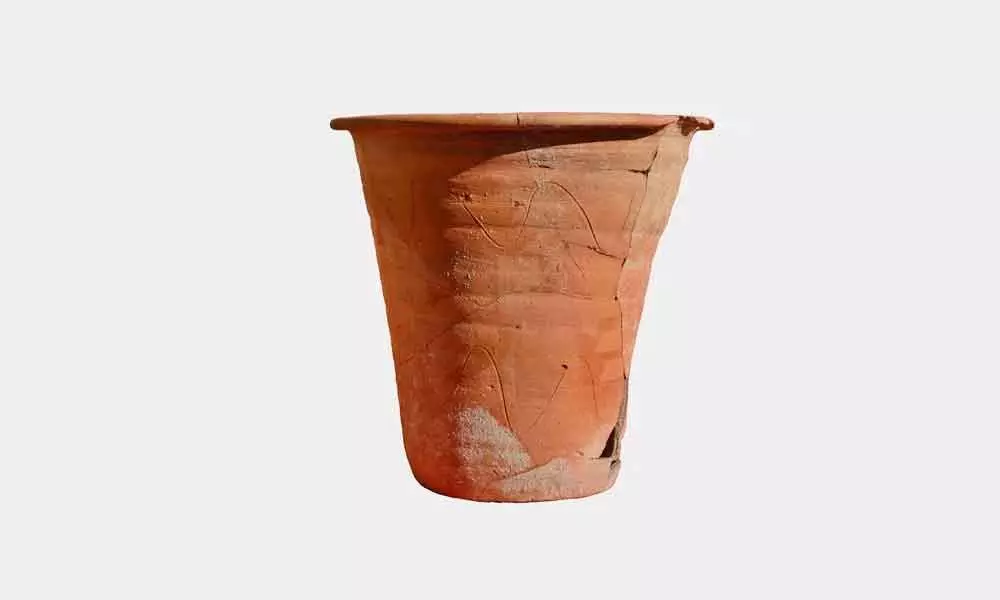Archaeologists Discovered A Way To Determine Whether Roman Pots Were Used For Pooping

Archaeologists Discovered A Way To Determine Whether Roman Pots Were Used For Pooping
- The contents of these containers can reveal what we used to eat, how we raised our children, and perhaps how they cursed our adversaries.
- Archaeologists from the University of Cambridge in the United Kingdom and the University of British Columbia in Canada revealed that these seemingly ordinary containers were exactly what experts had suspected.
Earthenware vessels are frequently used as windows into the lives of long-dead cultures. The contents of these containers can reveal what we used to eat, how we raised our children, and perhaps how they cursed our adversaries.
Archaeologists from the University of Cambridge in the United Kingdom and the University of British Columbia in Canada revealed that these seemingly ordinary containers were exactly what experts had suspected. They discovered preserved eggs of a species of intestinal worm within mineralized concretions discovered inside crockery dug up from the rural district of Gerace in central Sicily.
University of Cambridge archaeologist Tianyi Wang said that it was thrilling to discover the parasitic worms' eggs 1,500 years after they had been implanted.
Whipworms had been a scourge on human bottoms for at least tens of thousands of years, having been transmitted from similar parasites found in African apes. At any given moment, over 700 million people throughout the world carry the 4-centimeter-long, just under 2 inch helminth in their body. The parasite lives in the big intestine, where it releases egg after egg into human faeces.
They generally do n't make themselves known, but if there are enough of them in their guts, they could represent a severe health risk. Some of the worst-case circumstances include anaemia, intestinal pain, and even rectal prolapse.
Whipworms were probably a major nuisance for the ancient Romans, but it's not surprising they have them. Their stomachs were infested with all kinds of worms and amoeba, putting them at risk of dysentery, according to studies on the remains of their latrines. Nonetheless, this is the first time parasite eggs have been discovered in the leftovers of a pottery vessel, indicating that the Romans performed their business on the move.
The Roman site at Gerace was discovered in the 1990s, but excavations over the last decade have provided the majority of what we know about the site. Parts of a modest-sized villa with mosaics and marble ornamentation, as well as a bath house, store structure, and even kilns, have since been discovered, all dating from the 4th and 5th centuries CE.
The words 'praedia Philippianorum' in the baths' cold chamber tell us it possessed to someone named Philippiani, thus humans determine who possessed the estate. They can only conjecture whether that was Philippiani's crap pot or simply used by his visitors while people enjoyed his baths. The vessel was discovered high in the wreckage beyond one of the warm rooms of the baths, stripping it of essential context.
The container was typical of a type built in Sicily at the time, measuring 31.8 centimetres (approximately 1 foot) in length and 34 cm in diameter — a size enough for a squatting adult to sit over. For increased comfort, a seatless wicker or timber chair was most likely utilised. A modest pair of parallel wavy lines was carved across its sides for ornamentation.
Since this vessel has been identified as a chamber pot, additional similar pots discovered around the empire are more likely to have had the same purpose. Many are a little more elaborate or made of high-end materials than this.
However, not all of them are certain to have been used to collect bodily waste. A recent analysis of hundreds of containers discovered in the Serbian town of Viminacium suggests that they could have been used to store cereals or water, or perhaps as funeral urns, in addition to being possible chamber pots.














